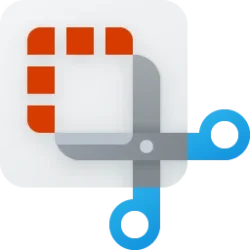Navigation
Install the app
How to install the app on iOS
Follow along with the video below to see how to install our site as a web app on your home screen.
Note: This feature may not be available in some browsers.
More options
Style variation
-
Disable Automatic Windows Updates in Windows 11
This tutorial will show you how to disable Windows Update from automatically downloading and installing updates in Windows 10 and Windows 11.- Brink
- Replies: 17
-
Use ViVeTool to Enable or Disable Hidden Features in Windows 11
This tutorial will show you how to use ViVeTool to enable or disable hidden features in Windows 10 and Windows 11.- Brink
- Replies: 49
-
Restore Classic File Explorer with Ribbon in Windows 11
This tutorial will show you how to restore the classic File Explorer with Ribbon for your account or all users in Windows 11.- Brink
- Replies: 422
-
Create Windows 11 Bootable USB Installation Media
This tutorial will show you how to create a bootable USB flash drive used to install Windows 11 with UEFI support.- Brink
- Replies: 135
-
Uninstall or Reinstall Copilot app
This tutorial will show you different ways to uninstall or reinstall the Copilot app for your account or all users in Windows 10 and Windows 11.- Brink
- Replies: 0
-
Add or Remove "Learn about this picture" Desktop icon
This tutorial will show you how to add or remove the "Learn about this picture" desktop icon when using Windows Spotlight as your desktop background for your account in Windows 11 and Windows 10.- Brink
- Replies: 27
-
Use SFC to Repair System Files in Windows 11
This tutorial will show you how to run the System File Checker (SFC) tool to repair missing, corrupted, and modified system files in Windows 10 and Windows 11.- Brink
- Replies: 25
-
Download Official Windows 11 ISO file from Microsoft
This tutorial will show you how to download an official Windows Server ISO or Windows 11 64-bit or ARM64 ISO file from Microsoft.- Brink
- Replies: 428
-
Repair Install Windows 11 with an In-place Upgrade
This tutorial will show you how to do a repair install of Windows 11 by performing an in-place upgrade without losing anything.- Brink
- Replies: 339
-
Clean Install Windows 11
This tutorial will show you step by step on how to clean install Windows 11 at boot on your PC with or without an Internet connection and setup with a local account or Microsoft account.- Brink
- Replies: 243
You are using an out of date browser. It may not display this or other websites correctly.
You should upgrade or use an alternative browser.
You should upgrade or use an alternative browser.
Tutorials
Windows 11 tutorials, tricks, tips, and guides.
Filters
Show only:
Loading…
This tutorial will show how to add or remove the Copy as path context menu and Copy path from the File Explorer command bar menu for drives for all users in Windows 10 and Windows 11.
Copy path or Copy as path will copy the full path of selected items (files and folders) wrapped in quotes to the Clipboard so you can paste (Ctrl+V) the full path(s) of the item(s) where you like.
The Copy as path context menu and Copy path from the File Explorer command bar menu is not available for drives by default, but can be added to be able to copy the full path of a selected drive (ex: "C:\") wrapped in quotes. This will also include mapped network drives (drive letter only).
You must be signed in as an administrator to add or remove the "Copy...
This tutorial will show you how to add or remove the Details tab from file properties for all users in Windows 10 and Windows 11.
You can right click on a file and click/tap on Properties to see a Details tab.
The Details tab allows you to see metadata information about the file.
You must be signed in as an administrator to add or remove the Details tab from file properties.
EXAMPLE: Details tab in file Properties
Here's How:
1 Do step 2 (add) or step 3 (remove) below for what you would like to do.
Add Details tab in File Properties for All Users
This is the default setting
A) Click/tap on the Download button below to download the file below, and go to step 4 below.
Add_Details_tab_to_Properties_for_all_users.reg...
This tutorial will show you how to get a list of devices that support or configured to wake the system from any sleep state in Windows 10 and Windows 11.
When you put your computer to sleep, a device can automatically wake the computer if the device is currently configured (allowed) to wake the system from a sleep state.
Some devices may support waking the system from a sleep state, but are not currently configured to wake the system.
Knowing which devices that are currently configured to wake the system from any sleep state can be useful if you want to prevent a device from waking the computer.
Reference:
https://docs.microsoft.com/en-us/windows-hardware/design/device-experiences/powercfg-command-line-options#devicequery
Option...
This tutorial will show you how to add or remove the Open as Portable Device context menu for all users in Windows 10 and Windows 11.
Windows Portable Devices (WPD) enables computers to communicate with attached media and storage devices. WPD provides a flexible, robust way for computers to communicate with music players, storage devices, mobile phones, cameras, and many other types of connected devices.
When you open removable media or devices (ex: USB) as a portable device, programs or software run from that device will store their data on the portable device itself and should not require storage or registry changes on the computer which they are running on.
To open removable media or device as a portable device in Windows, you...
This tutorial will show you how to add or remove Advanced security to the context menu for all users in Windows 10 and Windows 11.
You can use Advanced Security Settings to manually change the owner, change permissions, and set up advanced sharing settings for a selected item.
Normally to open Advanced Security Settings for an item (ex: file, folder, or drive), you would need to right click on an item, click/tap on "Properties", click/tap on the "Security" tab, and click/tap on the "Advanced" button.
If you like, you can add Advanced security to the context menu to make it easier to directly open Advanced Security Settings for an item as needed.
While you must be signed in as an administrator to add or remove Advanced security to...
This tutorial will show you how to enable or disable Untrusted Font Blocking for all users in Windows 10 and Windows 11.
A font is a graphical representation of text that may include a different typeface, point size, weight, color, or design.
To help protect from attacks that may originate from untrusted or attacker-controlled font files, Microsoft created the Blocking Untrusted Fonts feature. Using this feature, you can turn on a global setting that stops users from loading untrusted fonts processed using the Graphics Device Interface (GDI). Untrusted fonts are any font installed outside of the %windir%/Fonts directory. Blocking untrusted fonts helps prevent both remote (web-based or email-based) and local EOP attacks that can happen...
This tutorial will show you how to add or remove the Microsoft Teams icon on the taskbar system tray for your account in Windows 11.
Microsoft started rolling out Chat from Microsoft Teams to Windows 11 build 22000.100.
This includes a new Chat flyout right off the taskbar as well as an overall Teams desktop experience architected for optimized performance and the Windows 11 design language. You can remain connected to the people you care about with chats and video calls from the convenience of your Windows 11 PC, while they can participate from any device with Microsoft Teams: desktop, mobile, or even just a web browser.
With Chat from Microsoft Teams, you can connect to friends and family from your PC regardless of what computer or...
This tutorial will show you how to backup and restore Quick Settings for your account in Windows 11.
The lower right corner of Taskbar in Windows 11 has a button for the Notification Center (Win+N) and Quick Settings (Win+A).
Quick Settings is the place for you to quickly manage and access settings like Volume, Brightness, Wi-Fi, Bluetooth, Airplane mode, Battery saver, Night light, Mobile hotspot, Accessibility, Nearby sharing, and Project.
After you edit quick settings to add and remove quick settings you want, you can back up your changes to be able to restore later.
You can no longer add and remove Quick Settings in Windows 11 version 24H2.
Starting with Windows 11 build 25967 (Canary), Microsoft is trying out a scrollable view...
This tutorial will show you how to change the order added languages appear in on the language bar for your account in Windows 11.
When you have more than one language and/or keyboard layout installed, you will see the language bar (input indicator) on the taskbar system tray area and sign-in screen by default.
The language bar allows you to switch between your added languages and keyboard layouts as needed.
You can change the order languages appear in on the language bar to the order you want.
Added keyboard layouts are grouped with their language for the order on the language bar. If you change the order of a language, all of its keyboard layouts get moved along with it as a group.
EXAMPLE: Language bar
Here's How:
1 Open...
This tutorial will show you how to add or remove site exceptions to always or never use enhanced security in Microsoft Edge for your account in Windows 10 and Windows 11.
The Microsoft Edge web browser is based on Chromium and was released on January 15, 2020. It is compatible with all supported versions of Windows, and macOS. With speed, performance, best in class compatibility for websites and extensions, and built-in privacy and security features.
Microsoft Edge offers Enhance your security on the web, an optional browsing mode that provides an extra layer of protection when browsing the web and unfamiliar sites.
Enhanced security in Microsoft Edge helps safeguard against memory-related vulnerabilities by disabling just-in-time...
This tutorial will show you how to download fonts for all languages for your account in Windows 11.
A font is a graphical representation of text that may include a different typeface, point size, weight, color, or design.
If wanted, you can download fonts for all languages supported by Windows at once.
Downloading fonts for all languages supported by Windows can take up a significant amount of drive space on your PC.
Option One: Download Fonts for All Languages in Settings
Option Two: Download Fonts for All Languages in Control Panel
Uninstall Font in Settings
1 Open Settings (Win+I).
2 Click/tap on Personalization on the left side, and click/tap on Fonts on the right side. (see screenshot below)
Open Fonts settings
3...
Latest Tutorials
-
Browsers and Mail Enable or Disable Extensions from Other Stores in Microsoft Edge on Windows 11
- Started by Brink
- Replies: 0
-
-
-
-
Browsers and Mail Enable or Disable Extension Developer Mode in Microsoft Edge on Windows 11
- Started by Brink
- Replies: 0
-
Browsers and Mail Pin or Unpin Extensions on Toolbar in Microsoft Edge on Windows 11
- Started by Brink
- Replies: 4
-
Browsers and Mail Enable or Disable Extensions in Microsoft Edge InPrivate Browsing on Windows 11
- Started by Brink
- Replies: 0
-
-
Browsers and Mail Enable or Disable Extensions in Microsoft Edge on Windows 11
- Started by Brink
- Replies: 0
-
Tutorial Tags
android
background
battery
bitlocker
bluetooth
boot
color
context menu
copilot
defender
desktop
display
drive
edge
file explorer
folder
hyper-v
icon
keyboard
location
mouse
notepad
notifications
onedrive
outlook
paint
pen
photos
pointer
power
printer
recall
screenshot
search
settings
share
shortcuts
sign-in
sound
start menu
store
taskbar
terminal
theme
touch
usb
voice
wi-fi
widgets
xbox




















